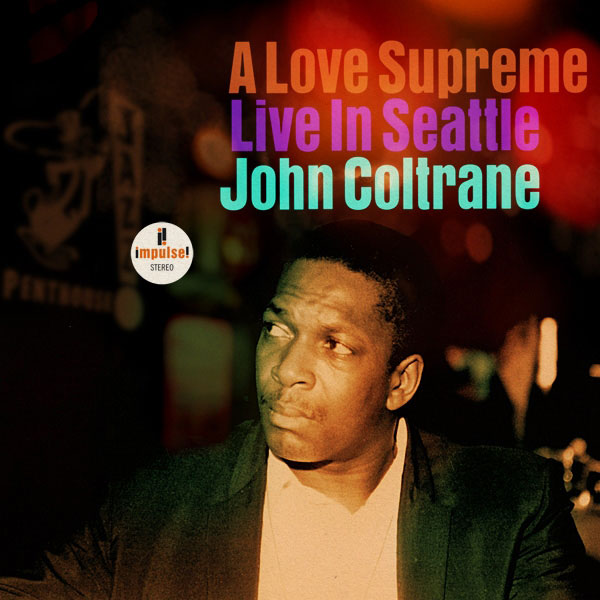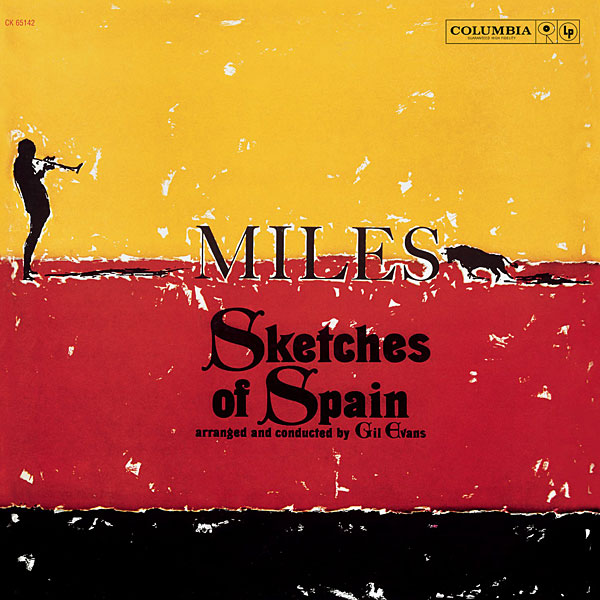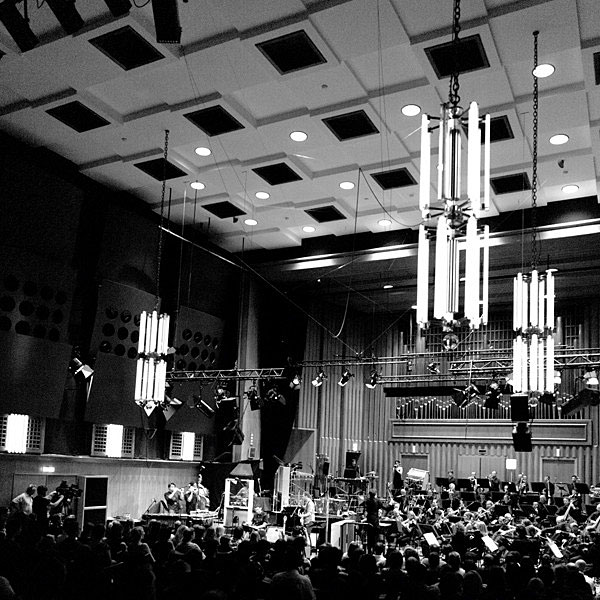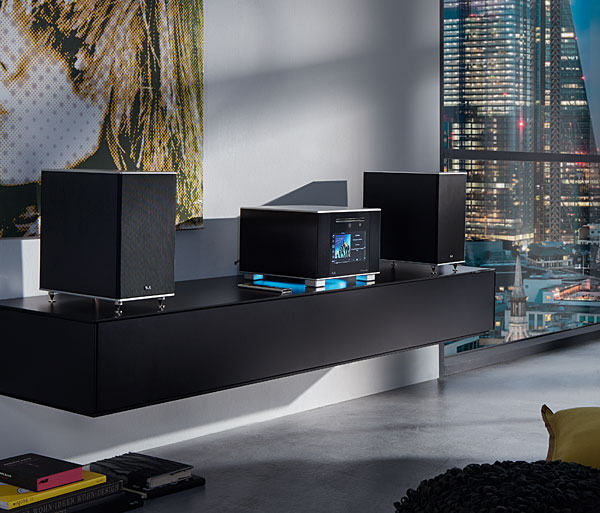| Columns Retired Columns & Blogs |
I think we can all agree that some T+A is good from time to time. I'll see myself out.

As I often do, I started my serious auditioning with phono, connecting the MoFi Electronics StudioPhono phono stage to the Caruso. The source was the MoFi Electronics UltraDeck turntable. The UltraDeck's tonearm was fitted with a MoFi UltraTracker, a 3.5mV-output moving magnet cartridge. Knowing that the Caruso R would digitize the incoming analog signal right away, I was concerned about that extra conversion's sonic impact. To my surprise, it didn't seem to tamper with the sound. Vinyl playback through the Caruso R's analog inputs may not have delivered all the detail heard from all-digital sources—wait just a moment for that—but it offered sufficient body and bloom.

I needed some deeply funky upbeat music to cheer me up, so I dug out the Demon Days LPs from Gorillaz (2 LPs, Parlophone 0190295423681). Rhythms stayed nice and tight, exciting enough to make my sleepy self want to get up and dance on a gray, wintry day. The "Dirty Harry" lyric "All I wanna do is dance" rang true. For fun, I tried switching sources between the LP version and Tidal. The record felt heftier, a bit dirtier and earthier, than the Tidal (16/44.1 FLAC, Parlophone/Warner Bros.). Ditto the funky fun of "Feel Good Inc." I heard the differences I expected to hear, the clichés of vinyl versus digital: LP richer, fuller, warmer, more expansive, less "perfect," letting go of a little detail in favor of fullness, body, dimensionality, and sense of life.
Digital playback seemed cleaner, tighter, punchier, with more image separation and cleaner starts and stops. Digital backgrounds were blacker. Of course they were.
I didn't mess with the tone controls too much, but I did experiment with the Contour settings, Presence and Fundamental, which adjust in 1dB steps. As their names suggest, the former tweaks the 2–3.5kHz range, the latter, 250Hz–500Hz. For most music, I settled on the Presence at 0 (flat/no change) or sometimes 1, and the Fundamental at 3, sometimes 2 for electronic music with deeper bass. Generally, the system's sound was neutral.
Sometimes the Caruso combo revealed details and textures in recordings that I tend to notice more often on costlier systems. "There Must Be a Song Like You," from Far In (24/96 FLAC, 4AD/Qobuz), the latest release from Helado Negro, aka Roberto Carlos Lange, delivers a cool, mellow, downbeat vibe. A pretty little steel drum interlude comes in, a surprise soon after the 3:00 mark. The steel drum's timbre was unmistakable, resonant and pure-sounding with nice, long decay. Scale and body were believable.
Subtle music like this needs those details to come through, so on Devendra Banhart's "Fancy Man" from Ape in Pink Marble (24/48 FLAC, Nonesuch/ Qobuz), a quirky low-key charmer, I dialed the Presence Contour down to –1dB then –2dB. His freak-folk vocal idiosyncrasies—that unusual phrasing and breath—were revealed with pleasing detail; the Presence adjustment revealed more buoyant expression. I noticed subtle variations in texture, especially on strings, which added to the track's frothy charm.

The better the recording and production, the more the Caruso system seemed to show off, while maintaining its composure. On John Coltrane's A Love Supreme: Live in Seattle (24/96 FLAC, Impulse!/Qobuz), the Caruso R—a moderately priced lifestyle system—conveyed some of the elements critical audiophiles and music lovers care about, such as pace, rhythm, and timing. On this album, Coltrane's quartet with McCoy Tyner, Elvin Jones, and Jimmy Garrison, supplemented by four other musicians, spins out extended improvisations from the original album's tracks. The staggering speed of attack, especially on percussion, hits explosively. Jones's kit takes a beating. The clanging cowbell in the last couple of minutes of the 20-plus–minute "Intro" track emerged from the left with (literally) striking intensity. On "Pursuance," Coltrane lets rip. His tenor sax shreds, squeals, squawks. Tyner's comping on piano serves as chill counterpoint. The Caruso R system showcased this virtuosic group's tight interplay, delivering a good approximation of an actual show and making a good impression.
More width and depth of soundstage would have been ideal, but meaningful spatial cues came through. In the beginning of "Interlude 3," as Garrison's bassline continued, someone in the back toward the right side kept clapping after the main applause had stopped.
Instruments mostly sounded realistic in tone and timbre. Precision and intent were made clear, if in broad strokes. The album filled me with longing to return to an intimate jazz club like Smalls, Snug Harbor, or Ronnie Scott's.

CD worked fine, but I admit I've become spoiled: Not being able to see the track names bugged me a little. I listened to Miles Davis's Sketches of Spain on an Esoteric CD (Esoteric ESSS 90157). During some passive listening, to "Concierto de Aranjuez," the delicacy of little percussion—tiny tambourines or castanets along with light shakers—made my ears perk up. When passive listening elicits reactions, I stop listening passively and pay attention.
Did I try the subwoofer output? I'm not a big bass-head, but I gave it a whirl, plugging in a Pioneer SW-8. The Caruso R includes adjustable subwoofer levels (–15dB to +15dB) and crossover settings of 40, 60, 100, or 150Hz.
I'd been listening to Billie Eilish's most recent album lately, but for some low-end action, I revisited "Bad Guy" from her prior release. I dialed the sub level up to 15. The bass seemed better integrated at 60Hz, but definition seemed better with it set at 100Hz—maybe more tuneful, too. A touch of oversaturation crept in, beyond what I intended. Taking the sub's level back to 5 helped this—and was a more sensible level for most music. A sub could be useful for home theater, too. Assuming you're happy with 2.1, the Caruso R could work for that.
During the review period, I got sick. When I wasn't sleeping or listening to music, I binged on several episodes of The Crown. I'd connected my Samsung BZ01 smart TV to the Caruso R via the TosLink optical input. (The unit's additional Ethernet connection allowed me to tether my TV, freeing up the wall jack for Caruso R connection.) As with the aforementioned audio book, this gave me a chance to adjust the Contour settings for speech. Turning Presence up to 2 increased clarity, and decreasing Fundamental from 3 to 1 balanced clarity with body. Teacups clinked and horses galloped. I heard gunshots and '60s Triumph motorcycles and QE2 telling Charles off. It was a much better experience through a pair of outboard speakers than through the Mu-so 2nd Gen's onboard ones—excellent as that all-in-one is, this was a temporary setup; usually it serves as a secondary system elsewhere. Hans Zimmer's score sounded pure and clean.

Speaking of orchestras and soundtracks, I missed the Record Store Day vinyl release of Calexico's Spiritoso, on which the Tucson-based band joins the Deutsches Filmorchester Babelsberg and Radio-Symphonieorchester Wien in Vienna for live recordings of Calexico's popular tracks. For now, I'll have to make do with streaming (24/44.1 FLAC, City Slang/Qobuz). The orchestras brought out the finer points of the compositions and heightened the soundtracklike aspects of Calexico's earlier works. Outbursts of applause—and the occasional shout or whistle—prevented too formal a tone and enhanced the event's live action. Modest shortcomings in scale were compensated by PRAT and "spirit." Spirited singer and trumpeter Jacob Valenzuela's tenor came alive on "Inspiracion." Percussion strutted. Rhythms were tight, clear. Flutes, pizzicato strings, delicate tambourine, shimmering triangle, and swelling mariachi horns gave me goosebumps on "Minas de Cobre."
The same thing happened when I saw them play that song live—a good sign. "Two Silver Trees," usually sweet and gentle, here was more ominous than charming. Joey Burns's voice was slightly hoarse. Humanity resided in this digital world. That's good. On "Santiago," from Loreena McKennitt's The Mask and Mirror (16/44.1 FLAC, Qobuz), I love how the talking drum—I think that's what it is—sounds as funky as an Old World wah-wah pedal. This track should build gradually to crescendos, its energy propelling it forward. Streamed, it seemed too pristine. Some of the song's wild abandon was lost. Increasing the Fundamental Contour control from 1 to 3 helped. Still, I preferred the CD (CD, Warner Bros. 9 45420-2); it had a touch more warmth and body. Time to buy the LP.
Out of curiosity, I briefly swapped out the Caruso S 10 speakers for the MBL 120s. Though the Caruso R's amplification—spec'd at 100Wpc into 4 ohms, 50Wpc into 8 ohms (nominal)—was below the 4 ohm MBLs' 200W minimum power recommendation, the R drove them fine as long as I didn't crank the music up too loud. The sound reflected a good balance of qualities from both "worlds"—the omnidirectionals' full, slightly rich sound coupled with the Caruso's detail and control.

Conclusion
The Caruso R packs plenty into a single, sturdy, compact unit. It's handy to have so many playback options and to have everything centralized. Turntable and phono preamp must be provided separately, but that's okay—preferable even.
The Caruso's sound seemed well-controlled but not too composed. There's a sense of flow and ease, with generous resolution, mostly neutral tonal balance, and a nice way with well-recorded music.
The Caruso mobile app wasn't perfect, but it's getting better all the time, and it was the better way to control playback.
The Caruso R provides plenty to please audiophiles new and established—although the latter group might consider the R as a secondary system. Its small footprint suits small spaces. It would be great in a bedroom.
Many tech-driven, high-end audio manufacturers offer single-box audio solutions. There's competition from makers like NAD, Devialet (though without the disc player), Naim, and others. The Caruso R is not the least expensive contender, but its sound quality rises above the "lifestyle" clic/stigma.
It's encouraging for the future of the hobby that even the most tech-driven manufacturers are making products geared toward a wider range of music-loving customers.
